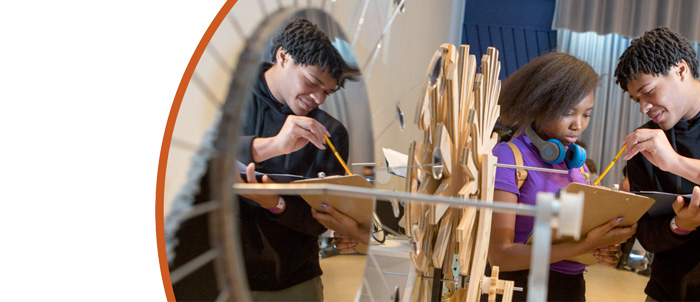Staying in Science: Examining the Pathways of Underrepresented Youth Mentored in Research
Effective Years: 2016-2020
This longitudinal research study will contribute to a broader understanding of the pathways of STEM-interested high school students from underrepresented groups who plan to pursue or complete science studies in their post-high school endeavors. The project will investigate the ways that formative authentic science experiences may support youth's persistence in STEM. The study focuses on approximately 900 urban youth who are high interest, high potential STEM students who participate in, or are alumni of, the Science Research Mentoring Program. This program provides intensive mentoring for high school youth from groups underrepresented in STEM careers. It takes place at 17 sites around New York City, including American Museum of Natural History, which is the original program site. Identifying key supports and obstacles in the pathways of high-interest, under-represented youth towards STEM careers can help practitioners design more inclusive and equitable STEM learning experiences and supports. In this way, the project will capitalize on student interest so that students with potential continue to persist.
In order to understand better the factors that influence these students, this research combines longitudinal social network and survey data with interviews and case studies, as well as an analysis of matched student data from New York City Public Schools' records. The research questions in the study are a) how do youths' social networks develop through their participation in scientists' communities of practice? b) what is the relationship between features of the communities of practice and youths' social networks, measures of academic achievement, and youths' pursuit of a STEM major? and c) what are the variations in youth pathways in relationship to learner characteristics, composition of social networks, and features of the community of practice? The research design allows for a rich, layered perspective of student pathways. In particular, by employing social network analysis, this study will reveal relational features of persistence that may be particularly critical for underrepresented youth, for whom STEM role models and cultural brokers provide an otherwise unavailable sense of belonging and identity in STEM. The study will also access a New York City Public Schools data set comprised of student-level records containing biographical and demographic variables, secondary and postsecondary course enrollment and grades, exam scores, persistence/graduation indicators, linked responses to post-secondary surveys, and post-education employment records and wages. These data enable examination of inter-relationships between in-school achievement and out-of-school STEM experiences through comparison of program participants to similar non-participant peers. This project is supported by NSF's EHR Core Research (ECR) program. The ECR program emphasizes fundamental STEM education research that generates foundational knowledge in the field.




